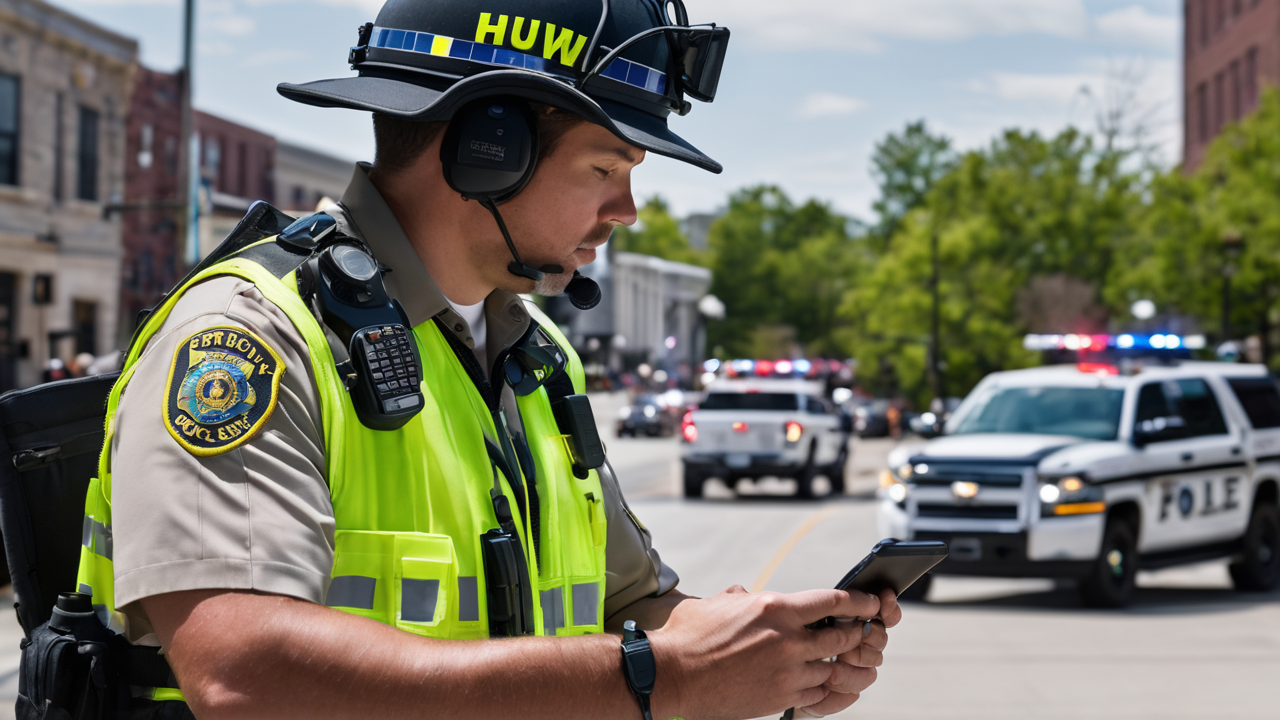Understanding the Basics of Walkie-Talkie Technology in Law Enforcement
The Evolution of Walkie-Talkies in the U.S. Police Forces
Walkie-talkies have been a crucial tool for police forces since the mid-20th century. They started as bulky devices with limited range. Over time, they evolved into compact, powerful tools.

Early models were heavy and had poor battery life. Modern versions are lightweight and can last for hours. The range has also improved significantly. Today's walkie-talkies can cover entire cities.
Digital technology has revolutionized these devices. They now offer clearer audio and more secure transmissions. Many models can also integrate with other police systems.
Key Features of Modern Walkie-Talkies Used by Law Enforcement
Modern police walkie-talkies are packed with features designed for law enforcement needs. They often have:
- Encryption capabilities to ensure secure communication
- GPS tracking for officer safety and coordination
- Emergency buttons for quick distress signals
- Multi-channel operation for organized communication
- Noise-canceling technology for clear audio in loud environments
- Durable construction to withstand tough conditions
These features make walkie-talkies indispensable for police work. They allow for quick, clear, and secure communication in various situations.
The Role of Communications in Public Safety
Effective communication is vital for public safety. Walkie-talkies play a key role in this. They allow officers to:
- Coordinate responses to emergencies
- Share real-time information during operations
- Call for backup quickly when needed
- Maintain constant contact with dispatch centers
- Communicate silently in sensitive situations
Good communication can mean the difference between success and failure in police operations. It helps keep both officers and the public safe.
Advanced Tactics for Police Using Walkie-Talkies
Implementing Strategic Communication in Operations
Police forces use specific tactics to maximize the effectiveness of walkie-talkies. These include:

- Using code words for sensitive information
- Implementing clear channel protocols
- Assigning specific channels for different units or operations
- Practicing brevity in transmissions
- Regular radio checks to ensure all units are connected
These tactics help maintain clear, efficient communication. They also enhance security during sensitive operations.
Training and Standardization in Walkie-Talkie Usage
Proper training is crucial for effective walkie-talkie use. Police departments often have standardized protocols. These cover:
- Proper radio etiquette
- How to relay information clearly and concisely
- Understanding and using code words
- Troubleshooting common technical issues
- Maintaining and caring for the devices
Standardization ensures all officers can communicate effectively. It reduces confusion and improves coordination in the field.
Integrating Walkie-Talkies with Other Law Enforcement Tools
Modern police forces integrate walkie-talkies with other technologies. This creates a more comprehensive communication system. Some integrations include:
- Connecting with body cameras for synchronized audio and video
- Linking to in-car systems for seamless communication
- Interfacing with dispatch software for better coordination
- Integrating with mobile data terminals for information sharing
- Connecting to digital evidence management systems
These integrations enhance the capabilities of walkie-talkies. They help create a more connected and efficient police force.
Challenges and Best Practices in Walkie-Talkie Communication
Navigating Technical Challenges and Interference
Despite their benefits, walkie-talkies can face technical issues. Common challenges include:

- Signal interference in urban environments
- Limited battery life during long operations
- Coverage gaps in remote areas
- Channel congestion during major incidents
- Compatibility issues between different models or brands
To address these, police departments often:
- Use multiple repeaters to extend range and coverage
- Carry spare batteries or use extended-life models
- Implement clear channel-switching protocols
- Invest in high-quality, compatible equipment across the force
These strategies help maintain reliable communication even in challenging conditions.
Ensuring Security and Integrity of Communications
Security is paramount in police communications. Departments use various methods to protect their transmissions:
- Advanced encryption protocols
- Frequency hopping to prevent interception
- Unique identification codes for each device
- Regular security audits of the communication system
- Strict protocols for lost or stolen devices
These measures help prevent eavesdropping and unauthorized access. They ensure that sensitive information remains protected.
Building an Effective Communication Network in Law Enforcement
Creating a robust communication network is crucial for police effectiveness. This involves:
- Designing a comprehensive radio coverage plan
- Regularly updating and maintaining equipment
- Providing ongoing training for all personnel
- Establishing clear communication protocols and hierarchies
- Regularly reviewing and improving the system based on feedback
An effective network ensures that all parts of the force can communicate seamlessly. It supports better coordination and faster response times.
In conclusion, walkie-talkies remain a vital tool in modern policing. Their evolution has made them more capable and secure. When used effectively, they significantly enhance police operations and public safety.


